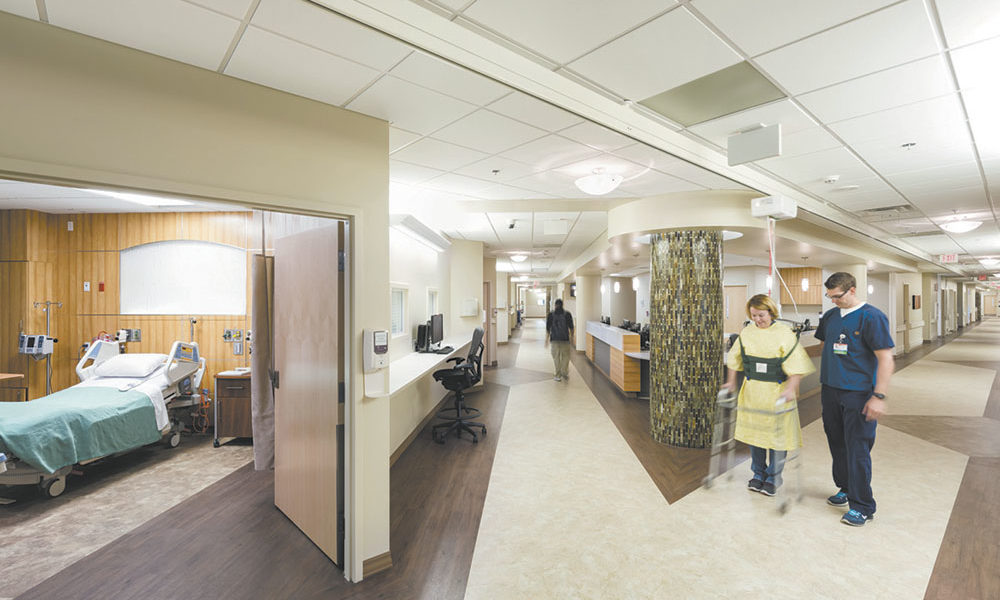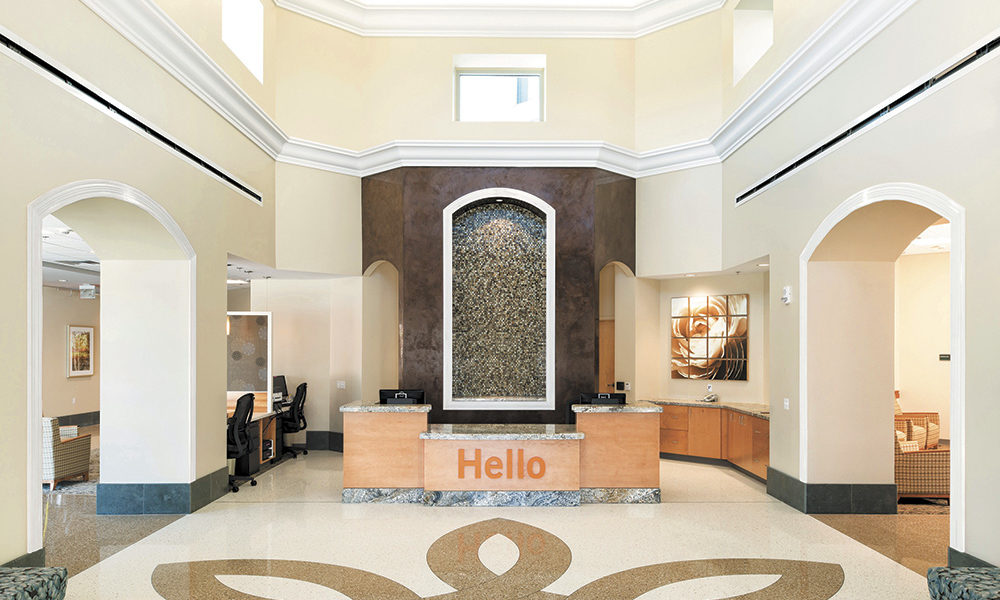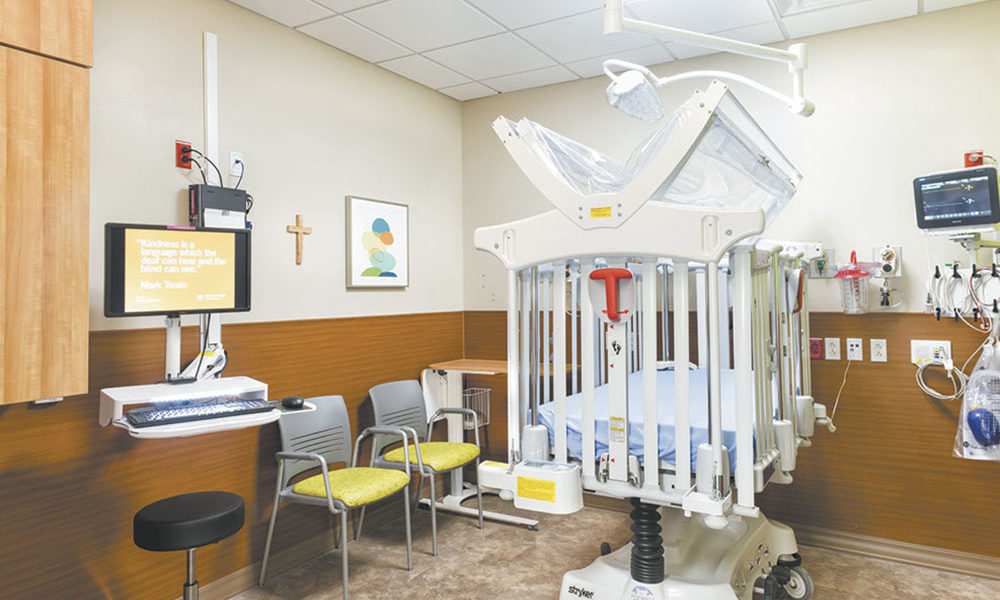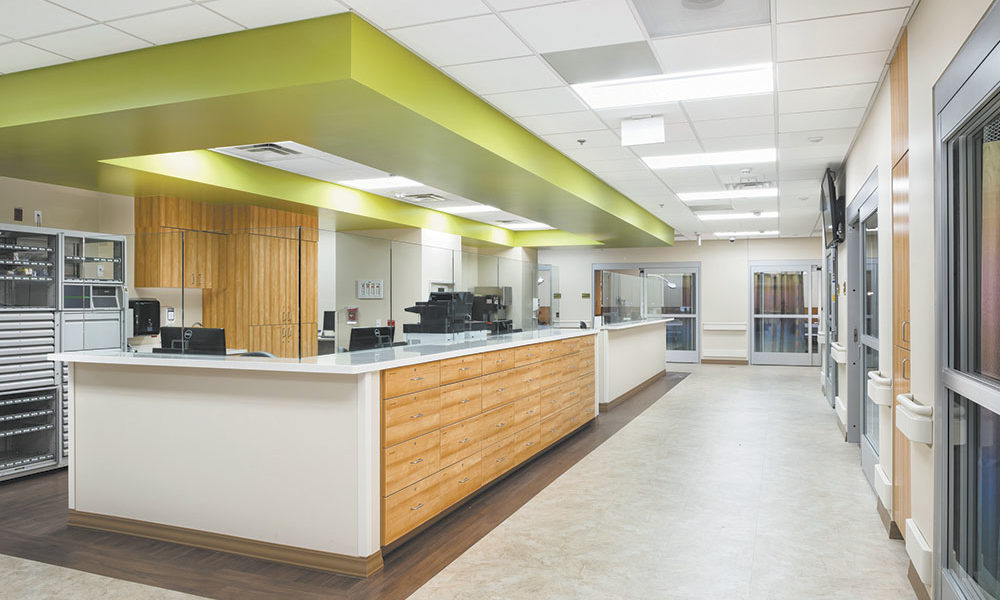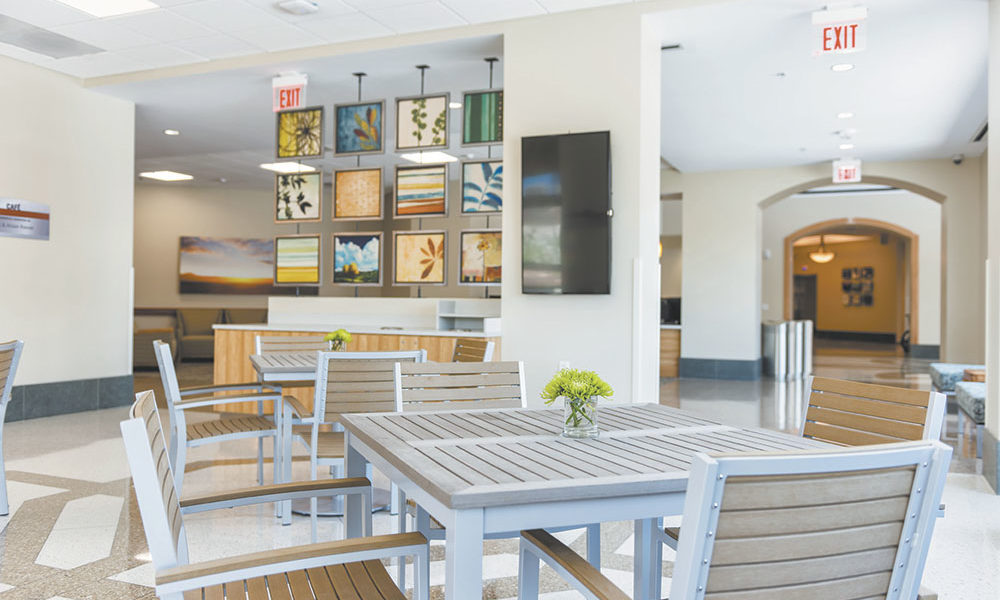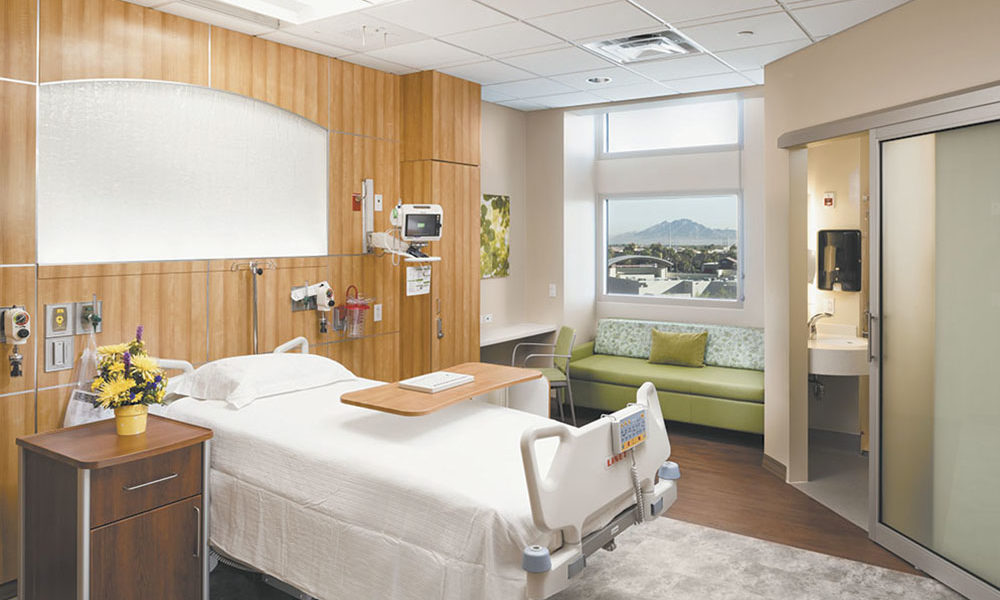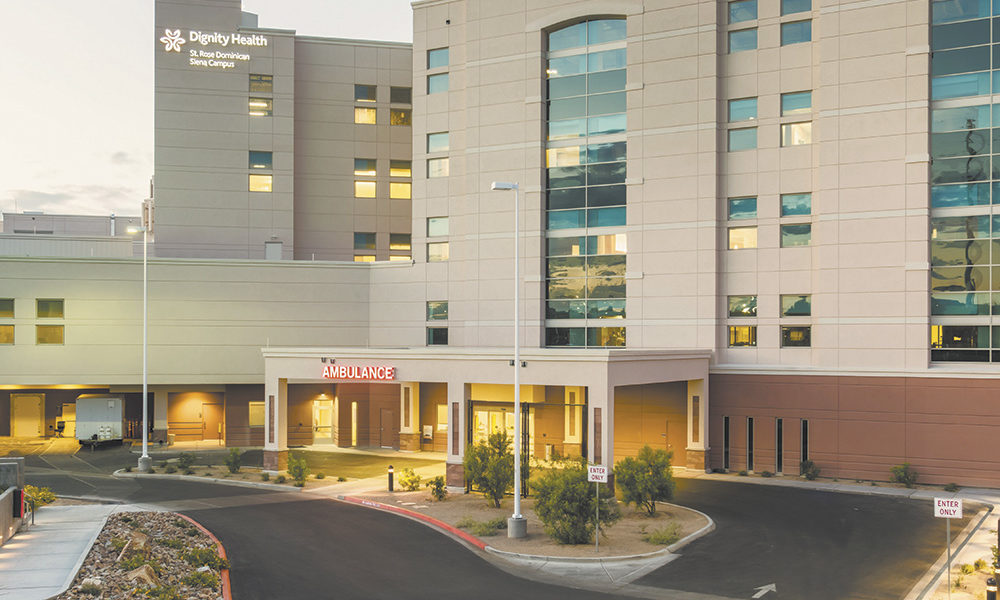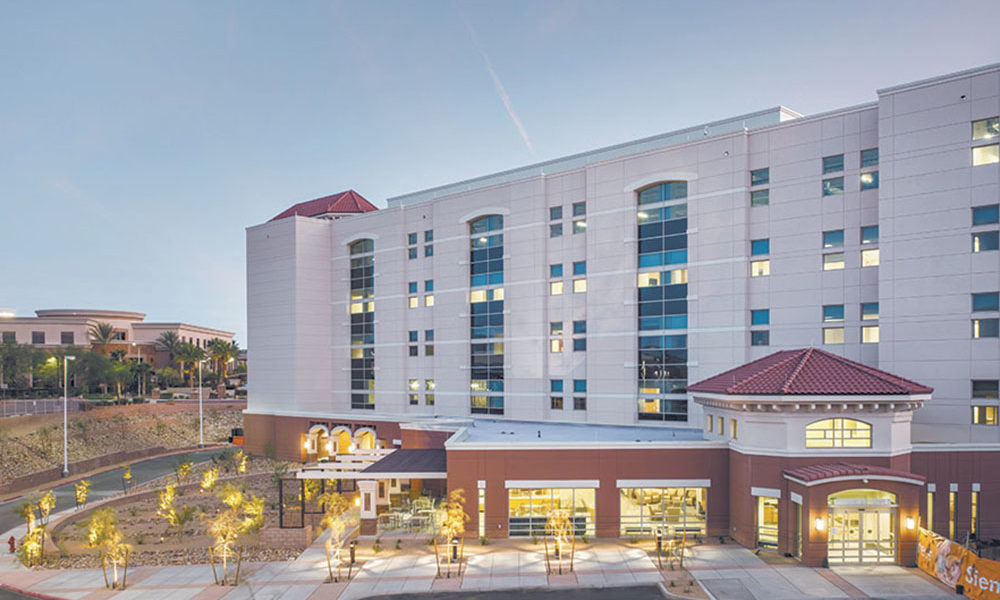Prefab + Collaboration = Winning Combo for Dignity Health – St. Rose Dominican Siena
With the enactment of the healthcare law, the rebounding Nevada economy and a substantial increase in population, Las Vegas, Nevada has been more than a little motivated to expand and improve its healthcare offerings. A major player fulfilling the need is Dignity Health’s St. Rose Dominican Hospitals, including its Siena campus in Henderson, Nevada. Because of its proximity to the strip, former CEO Rod Davis requested the finishes mirror the tone and feel of the area’s signature hospitality industry.
Designed to embody the character of Catholic Spanish missions, the St. Rose Dominican Siena Campus fosters the philosophy of the Dominican order that technology mends while compassion heals. This new tower expanded a facility originally built in 2000.
The new five-story, 220,000-square-foot tower brought the total campus to 550,800 square feet and was designed and built for growth to provide patient care to 136 acute care beds. This would bring the hospital to 362 beds. Features of the new patient tower include 72 med-surg beds (plus one shelled floor for 36 med-surg beds), 24 ICU beds (plus four shelled ICU beds), a new ED with 56 treatment rooms, new cardiac outpatient center, an addition that brings total ORs to 16, an enhanced imaging department, a new support services area, expanded pharmacy and lab and a substantial upgrade to the central utility plant.
The flexible design of the trauma area is such that the current Level 3 trauma designation can be transformed to Level 2 if and when the hospital chooses to do so. The new addition created two separate waiting areas for adult and pediatric patients, a great service to the community.
Eye on infection control
Expanding a NICU within an active hospital is fraught with potential problems. Throughout the project, infection control measures were coordinated with department and hospital personnel to ensure a clean environment was maintained. The team worked with the structural steel erector to design and implement redundant safety systems to erect the steel structure over the top of the occupied lab and pharmacy departments with no incidents or disruption to normal operations.
The existing lab, pharmacy and ORs had to remain fully functional throughout construction. This was especially challenging when the existing roof above those spaces was removed and the NICU floor structure was being built in its place, with the potential of lab technicians working on very precise tests right below construction.
Several temporary measures were implemented to keep the hospital employees below construction safe and productive during this phase. This included temporarily lowering the existing acoustical ceiling to approximately seven feet above the finished floor, allowing a temporary working platform to be erected for installation of new utilities serving the NICU expansion. Also, to minimize the effects of construction vibration and noise, existing acoustical ceiling tiles were replaced with gasketed panels finished with melamine for a tight seal, sterile/cleanable material finish and similar appearance. Additionally, negative air machines with HEPA and charcoal filters were in use during floor construction.
An integrated high-performance team
By working together with the best interests of the project in mind, the Design-Build team delivered solutions greater than its individual roles. Early involvement by the owner was a key factor in the success of the project. The project had an interactive, open “Big Room” with the Design-Build team and owner housed in the same office. This promoted interactive communication and aligned the team to the same common goal.
A highly visual, colorful phasing plan completely eliminated the “intimidation factor” for the owner and administration, as well as the city’s building department. This was a huge, complex project, the third largest in the city at the time. The phasing plan told a visual story that everyone was able to share with a consistent, easy-to-understand message. This was a tremendous benefit on several fronts. For example, carefully choreographed events made multiple and complex electrical upgrades and switchovers run smoothly and efficiently. Also, the hospital shared its need to expand ED capacity to support the needs of the community. The team worked on ways to open the hospital in phases to allow the hospital to provide that care earlier than originally anticipated. This early phased opening also allowed the hospital to control additional growth, which reduced stress on staff.
Prefab shaves two months off the schedule
Headwall panels for this project were assembled on the ground in jigs, and included all of the roughed-in utilities. The exterior skin of the building was also prefabricated (including framing and sheathing) reducing the overall duration of the skin completion. This procedure facilitates greater quality control, reduces waste and provides a safer environment to build. In this phase of the project, the prefabricated skin panels greatly reduced the time spent impacting the existing patient tower and resulted in allowing the team to open the first-floor ED two months early.
Prefabrication played a major role in turning over the hospital sooner. A smaller dedicated crew meant fewer people on ladders working overhead with the potential for incidents. Prefabricated sections of skin panels were brought over and attached to the structure. In four days, one side of the building was in place.
Patient headwalls installed in the blink of an eye (almost)
Senior Project Superintendent Steve Wilson likes to share the story about how the owner representative did a double take, wowed by the progress during a seven-hour span.
At 8 a.m., Ed Lindsay, vice president of Construction and Real Estate services for Dignity Health, brought a visiting colleague to the second floor of the building, which was completely barren. Circling back at 3 p.m., Lindsay and his guest witnessed plumbers piping in med/gas and electricians finishing up connections on 12 framed and installed patient headwalls.
“There was nothing here this morning!” exclaimed Lindsay. “I literally took a double take.”
Other preassembly highlights included state-of-the-art headwalls for 96 patient rooms, 56 ED treatment rooms and 24 PACUs and 335 pre-piped VAV packages with controls. Additionally, there was preassembly of 100, 20-foot-long distribution piping racks (which looked like daddy-longlegs), raised in place and connected with fixtures in floors above. Toilets, sinks and shower carriers/piping were also preassembled and installed in place.
Being named Project of the Year by the Associated General Contractors in Las Vegas was icing on the cake for the team. But it all comes down to the patients.
Posted July 28, 2016
More Articles:
- Installation Begins of 200+ Offsite Modular Components for Healthcare Facility Project in Ohio
- New Birthing Center in India Seeks to Transform the Birthing Experience
- Mayor Muriel Bowser, Universal Health Services Break Ground on New Cedar Hill Regional Medical Center
- Inpatient Tower at St. Joseph’s Hospital in Florida Wins 2022 PCI Award
- Coverings 2024
Apr 22, 2024 – Apr 25, 2024 - Hospital, Outpatient Facilities & Medical Office Buildings Summit
Apr 25, 2024 – Apr 25, 2024 - CxA Workshop & Exam
Apr 29, 2024 – Apr 30, 2024 - EMP Seminar & Exam at CxEnergy 2024
Apr 29, 2024 – Apr 30, 2024 - CxEnergy
Apr 29, 2024 – May 2, 2024 - PHCC West 2024
Apr 29, 2024 – May 2, 2024 - Lean in Design Forum 2024
May 1, 2024 – May 2, 2024


